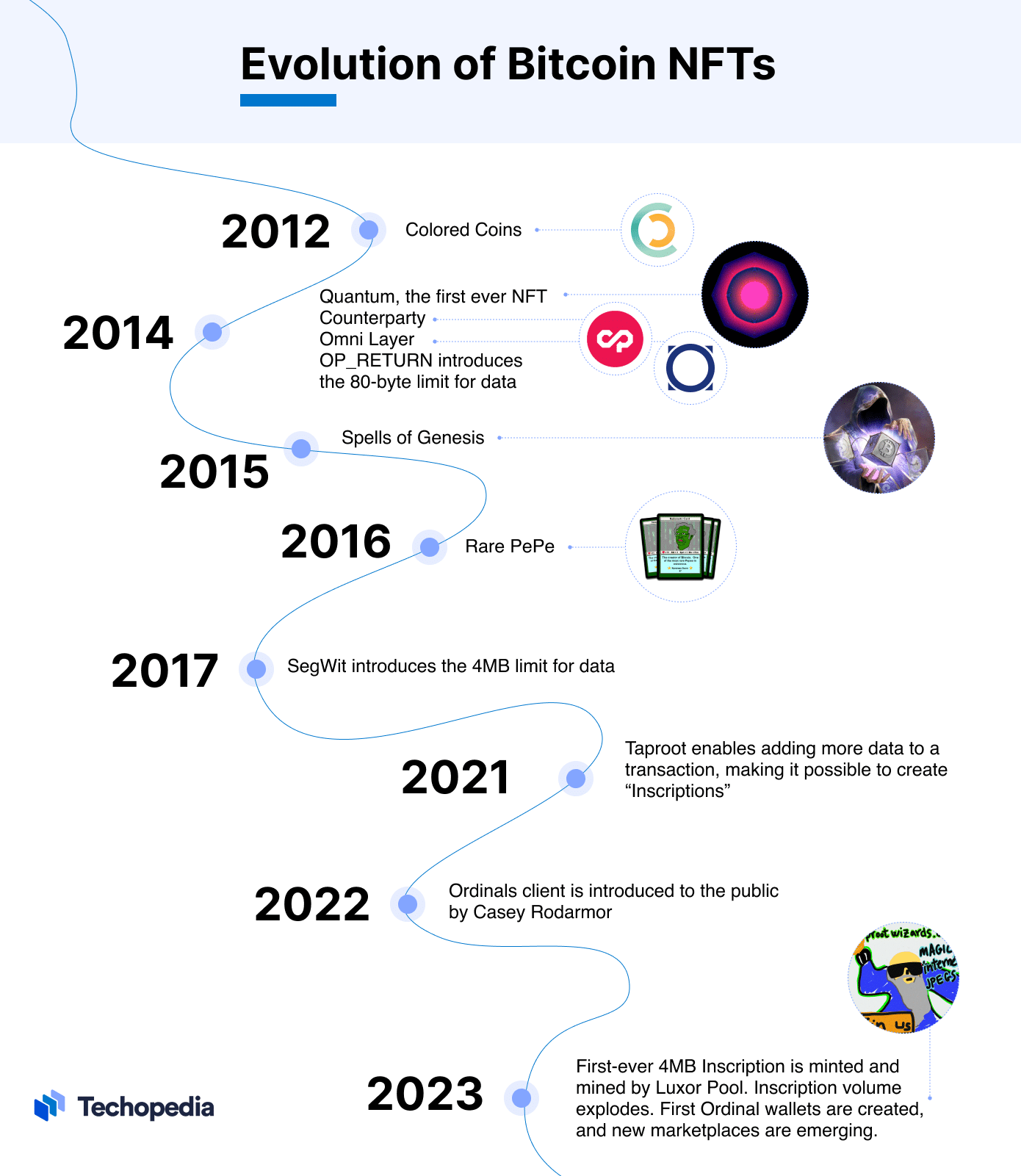What are Bitcoin Ordinals?
Bitcoin Ordinals is a protocol that allows individual satoshis (SATs) in a Bitcoin blockchain to be assigned a unique identifier and transacted with extra data attached. (A satoshi is the smallest unit of bitcoin currency, and there are 100,000,000 satoshis in a single bitcoin.) The protocol, which is credited to Casey Rodarmor, effectively allows non-fungible tokens (NFTs) to be created directly on the Bitcoin blockchain. Bitcoin NFTs may also be referred to as Ordinal NFTs.
Until recently, bitcoins were fungible (interchangeable), and one satoshi on a blockchain could not be differentiated from another. Rodarmor’s protocol changed that by taking advantage of two updates to the original Bitcoin protocol: Segregated Witness (SegWit) and Taproot.
Taproot introduced a new type of Bitcoin address format that the Bitcoin Ordinals protocol uses to identify specific satoshis.
The Segregated Witness update allowed witness information (also known as witness script) to be decoupled from transaction data and stored in a separate data structure on the blockchain. This change increased Bitcoin’s block size and made it possible for users to inscribe image and video data in the witness script along with digital signatures and other validation information.
Ordinal NFTs
NFTs are unique digital assets that are authenticated on a blockchain to protect the creator’s intellectual property (IP).
NFTs on Ethereum or Solana blockchains can only reference metadata that documents ownership and authenticity for a specific digital asset. The metadata itself is stored off-chain in a separate file.
In contrast, Ordinal NFTs can also store the digital asset itself on-chain within a transaction’s witness data.
To create an Ordinal NFT, the user must first send an ordinal SAT to a Taproot-compatible wallet and include (inscribe) data and metadata as part of the transaction. Once mined, the inscription is permanently etched onto the first satoshi of the transaction’s initial output.
The initial process requires running a Bitcoin node, syncing the entire Bitcoin blockchain, and using command-line interfaces – all of which can be daunting tasks for non-technical users. With the advent of no-code ordinal mining applications, however, even less technically proficient users can upload content for inscriptions and create Ordinal NFTs.
Controversy
Bitcoin Ordinals has sparked a lot of debate within the crypto community. Critics argue that inscribed satoshi Ordinals use block space inefficiently and will ultimately lead to increased Bitcoin transaction fees and slower transaction times for all users on the network. Proponents of Bitcoin Ordinals, however, are interested in how the protocol can be used to expand Bitcoin’s use beyond financial transactions.
In addition to creating Ordinal NFTs, for example, the protocol could potentially be used to attach ordinal satoshis to individual security tokens or stablecoins, enable Bitcoin smart contracts, and introduce the cryptocurrency to a broader audience.






